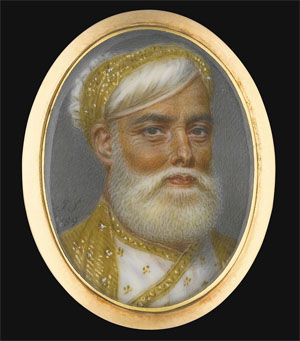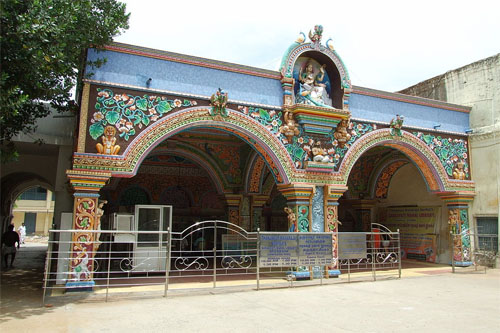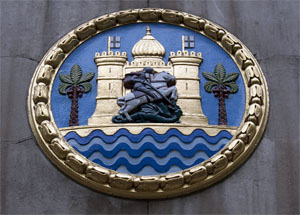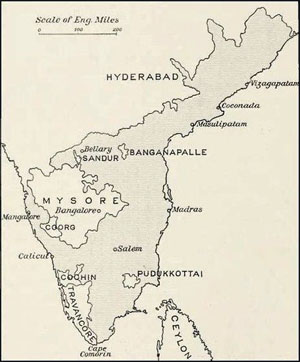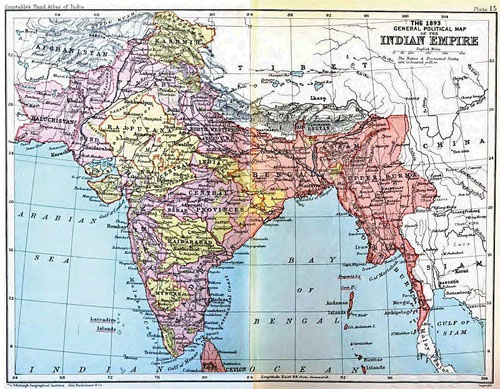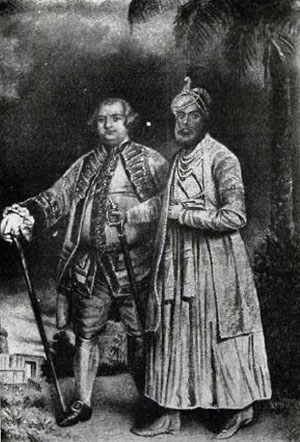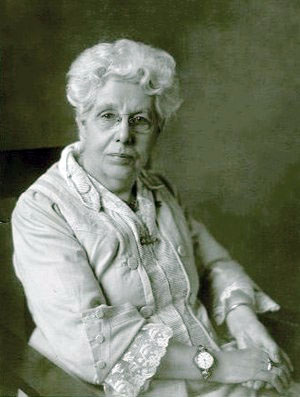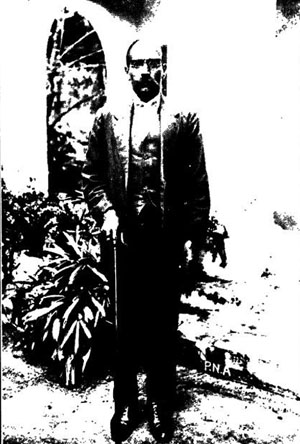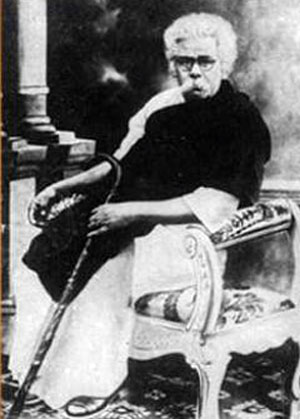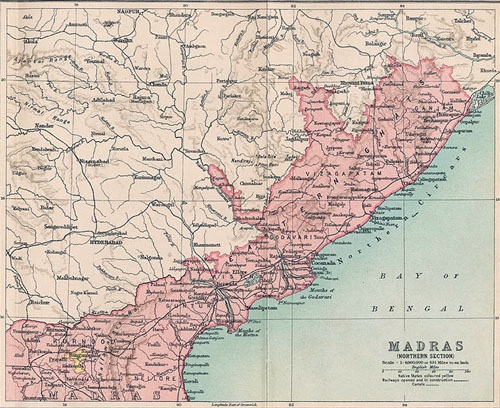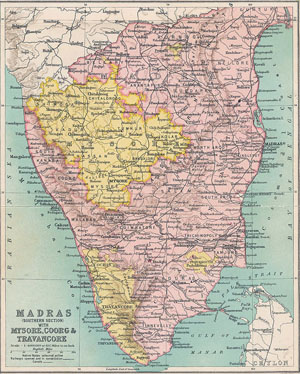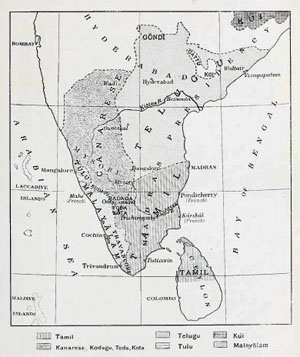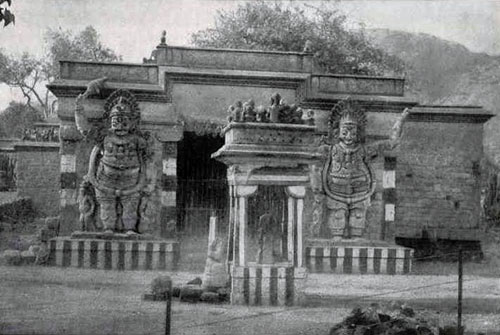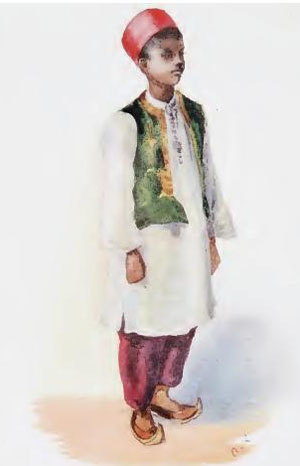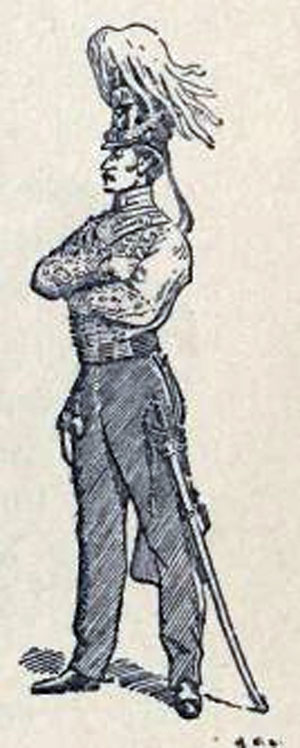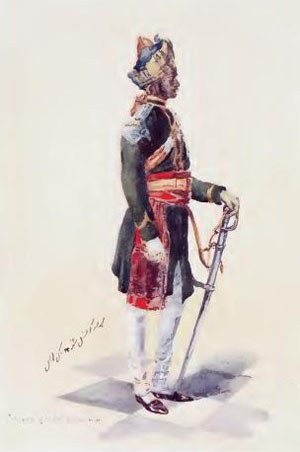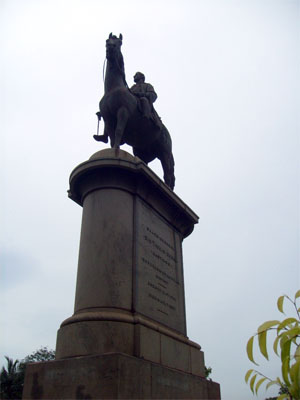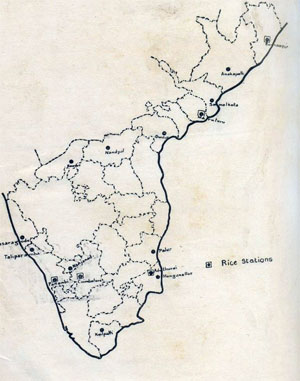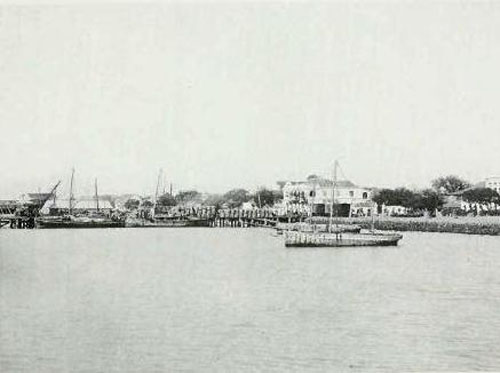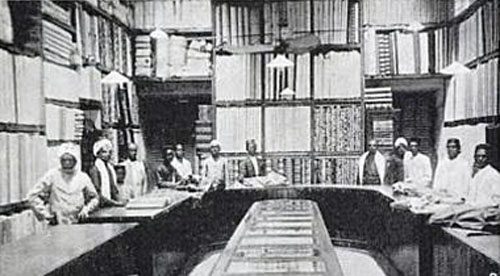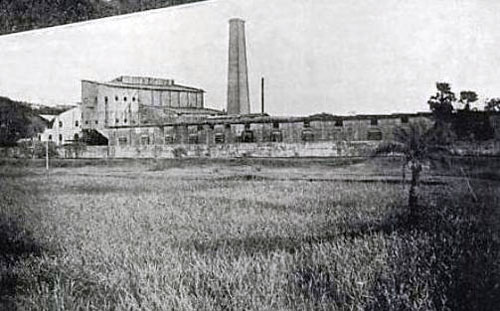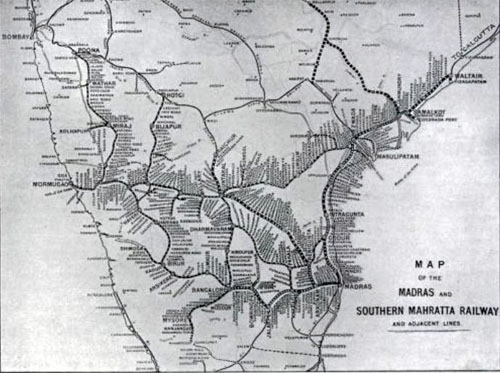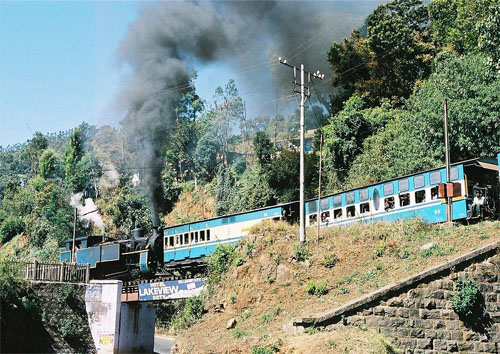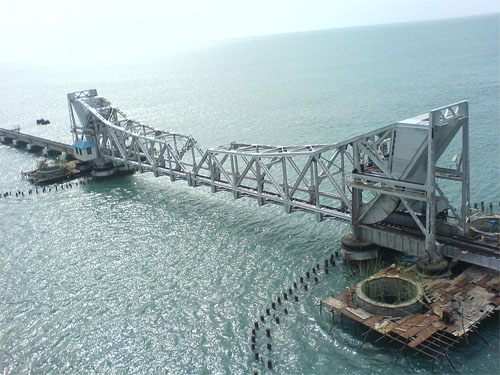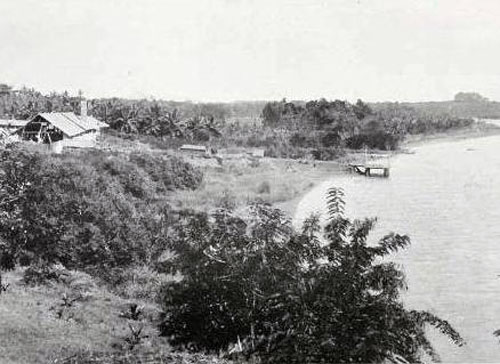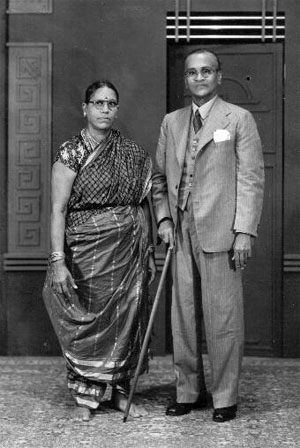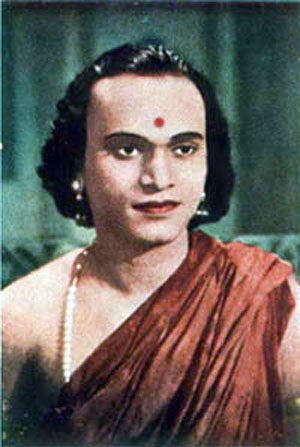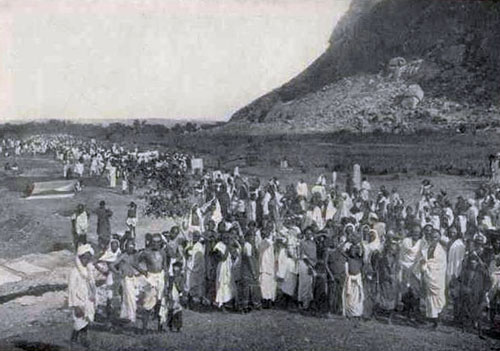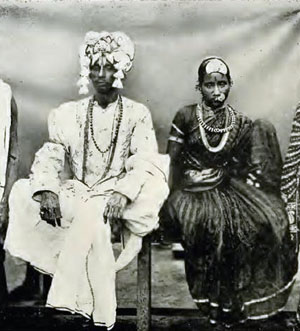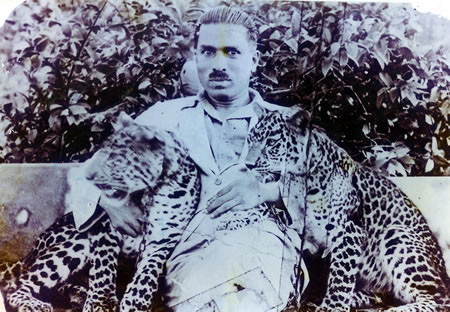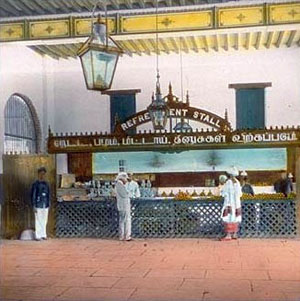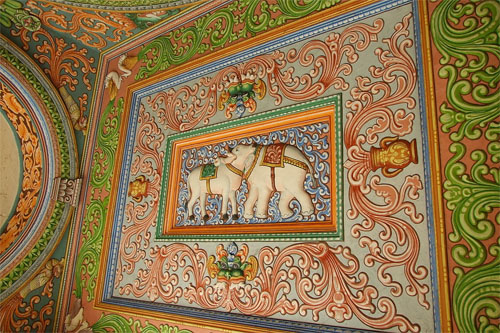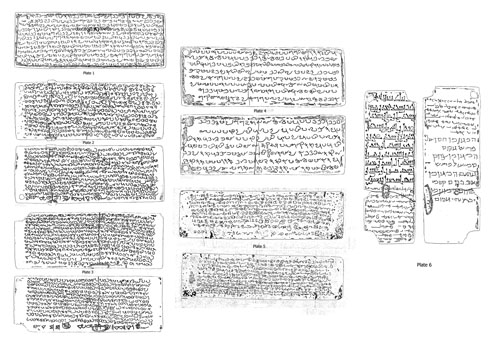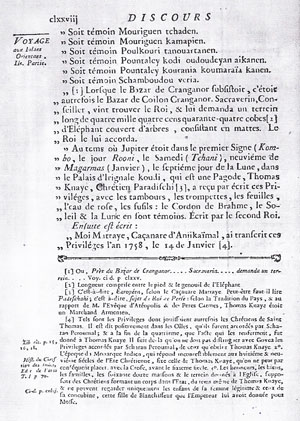by Wikipedia
Accessed: 6/14/21
Two books are attributed to Chanakya: Arthashastra, and Chanakya Niti, also known as Chanakya Neeti-shastra. The Arthashastra was discovered in 1905 by librarian Rudrapatna Shamasastry in an uncatalogued group of ancient palm-leaf manuscripts donated by an unknown pandit to the Oriental Research Institute Mysore.Formerly known as the Oriental Library, the Oriental Research Institute (ORI) at Mysore, India, is a research institute which collects, exhibits, edits, and publishes rare manuscripts written in various scripts like Devanagari (Sanskrit), Brahmic (Kannada), Nandinagari (Sanskrit), Grantha, Malayalam, Tigalari, etc.
The Oriental Library was started in 1891 under the patronage of Maharaja Chamarajendra Wadiyar X... It was a part of the Department of Education until 1916, in which year it became part of the newly established University of Mysore. The Oriental Library was renamed as the Oriental Research Institute in 1943.
From the year 1893 to date the ORI has published nearly two hundred titles. The library features rare collections such as the Encyclopaedia of Religion and Ethics by James Hastings, A Vedic Concordance by Maurice Bloomfield, and critical editions of the Ramayana and Mahabharata. It was the first public library in Mysore city for research and editing of manuscripts. The prime focus was on Indology. The institute publishes an annual journal called Mysore Orientalist. Its most famous publications include Kautilya's Arthashastra, written in the 4th century BC, edited by Dr. R. Shamashastri, which brought international fame to the institute when published in 1909.
One day a man from Tanjore handed over a manuscript of Arthashastra written on dried palm leaves to Dr Rudrapatnam Shamashastry, the librarian of Mysore Government Oriental Library now ORI. Shamashastry's job was to look after the library's ancient manuscripts. He had never seen anything like these palm leaves before. Here was a book that would revolutionise the knowledge of India's great past. This palm leaf manuscript is preserved in the library, now named Oriental Research Institute. The pages of the book are filled with 1500-year-old Grantha script. It looks like as if they have been printed but the words have been inscribed by hand. Other copies of Arthashastra were later discovered later in other parts of India.[1]
In this context, my mind remembering a day which was the His Excellency Krishnaraja Wodeyar went to Germany at the time of Dr. R. Shamashastry were working as a curator of Oriental Library, Mysore, The King sat in a meeting held in Germany and introduced himself as the King of Mysore State. Immediately a man stood up and asked, "Are you from our Dr. R. Shamashastry's Mysore?" Because the Arthashastra edited by him took a fame worldwide. The King wondered and came back to Mysore immediately to see Dr. R. Shamashastry, and also Dr. R. Shamashastry appointed as Asthana Vidwan. Sritattvanidhi, is a compilation of slokas by Krishnaraja Wodeyar III. Three edited manuscripts Navaratnamani-mahatmyam (a work on gemology), Tantrasara-sangraha (a work on sculptures and architecture), and Vaidashastra-dipika (an ayurvedic text), Rasa-kaumudi (on mercurial medicine) all of them with English and Kannada translation, are already in advanced stages of printing.
Oriental Research Institute
The ORI houses over 45,000 Palm leaf manuscript bundles and the 75,000 works on those leaves. The manuscripts are palm leaves cut to a standard size of 150 by 35 mm (5.9 by 1.4 in). Brittle palm leaves are sometimes softened by scrubbing a paste made of ragi and then used by the ancients for writing, similar to the use of papyrus in ancient Egypt. Manuscripts are organic materials that run the risk of decay and are prone to be destroyed by silverfish. To preserve them the ORI applies lemon grass oil on the manuscripts which acts like a pesticide. The lemon grass oil also injects natural fluidity into the brittle palm leaves and the hydrophobic nature of the oil keeps the manuscripts dry so that the text is not lost to decay due to humidity.
The conventional method followed at the ORI was to preserve manuscripts by capturing them in microfilm, which then necessitated the use of a microfilm reader for viewing or studying. Once the ORI has digitized the manuscripts, the text can be viewed and manipulated by a computer. Software is then used to put together disjointed pieces of manuscripts and to correct or fill in any missing text. In this manner, the manuscripts are restored and enhanced. The original palm leaf manuscripts are also on reference at the ORI for those interested.
-- Oriental Research Institute Mysore, by Wikipedia
The Arthashastra, which discusses monetary and fiscal policies, welfare, international relations, and war strategies in detail. The text also outlines the duties of a ruler. Some scholars believe that Arthashastra is actually a compilation of a number of earlier texts written by various authors, and Chanakya might have been one of these authors (see above).[9]
• Chanakya Niti, which is a collection of aphorisms, said to be selected by Chanakya from the various shastras.
-- Chanakya, by Wikipedia

Maratha Kingdom of Thanjavur
Princely State of Thanjavur
1674–1855
Map of Tanjore
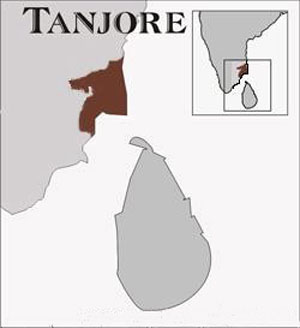
Approximate extent of the Thanjavur Maratha Kingdom, at the time of its accession to the British in 1798
Status: Kingdom from 1674 to 1799; Princely state under the paramountcy of the British Raj (1799–1855)
Capital: Tanjore
Common languages: Marathi, Telugu, Sanskrit, Tamil
Religion: Hinduism
Government: Principality
Ruler
• (first) 1674 - 1684: Venkoji
• (last) 1832 - 1855: Shivaji II of Thanjavur
History
• Conquest of the Madurai Nayak Kingdom by Venkoji: 1674
• Earliest records: 1674
• Disestablished: 1855
Area: 9,600 km2 (3,700 sq mi)
Preceded by / Succeeded by
Thanjavur / Company rule in India
Nayak kingdom / Company rule in India
Ramnad estate / Company rule in India
Today part of: India
The Thanjavur Maratha kingdom of bhonsle dynasty was a principality of Tamil Nadu between the 17th and 19th centuries. Their native language was Marathi. Venkoji was the founder of the dynasty.
Maratha conquest of Thanjavur
Following the demise of Chola rule in the 13th century (specifically around 1279), the Thanjavur area came under the rule of the Pandyas and then, following the invasion of Malik Kafur, it fell into disorder.
Pandya nadu very quickly reasserted their independence and forced the Delhi Sultan to flee Thanjavur. Soon afterwards, however, they were conquered by the Vijayanagara Empire. The Emperor appointed his trusted Kin, who belonged to the Telugu Balija caste as Governors (Nayakas) of Madurai and Tanjavur. An internal family squabble between Chokkanatha Nayak of Madurai Nayak dynasty and his uncle Vijayaraghava Nayaka of Tanjavur, let to a war, and eventually defeated Thanjavur. The rule of the Thanjavur Nayaks lasted until 1673 when Chokkanatha Nayak the ruler of Madurai invaded Thanjavur and killed its ruler, Vijayaraghava.
Chokkanatha placed his brother Alagiri on the throne of Thanjavur, but within a year the latter threw off his allegiance, and Chokkanatha was forced to recognise the independence of Thanjavur. A son of Vijaya Raghava induced the Bijapur Sultan to help him get back the Thanjavur throne. In 1675, the Sultan of Bijapur sent a force commanded by the Maratha general Venkoji (alias Ekoji) to recapture the kingdom from the new invader. Venkoji defeated Alagiri, and occupied Thanjavur. He did not, however, place his protege on the throne as instructed by the Bijapur Sultan, but seized the kingdom and made himself king. Thus began the rule of the Marathas over Thanjavur.
Maratha kings
Venkoji
Venkoji, a half-brother of the Maratha king Shivaji, was the first Raja of Thanjavur from the Bhosale dynasty. It is believed[by whom?] that he took over the administration of Thanjavur in April 1674 and ruled until 1684. During his reign, Shivaji invaded Gingee and Thanjavur in 1676–1677 and made his brother Santaji the ruler of all lands to the north of the Coleroon. During the last years of his reign, Venkoji also allied with Chokkanatha of Madurai to repulse an invasion from Mysore.
Shahuji I
Shahuji I was the eldest son of Venkoji and he ascended the throne at the age of twelve. During his reign, the Mughals occupied the Coromandel coast and Tiruchirapalli and forced him to pay tribute. Shahuji was a patron of literature. During his reign, there were frequent skirmishes and battles with the Raja of Madurai and Ramnad for control of the border lands.
Shahuji I
by Wikipedia
Accessed: 3/25/22
Shahuji I Bhonsle, Raja of Thanjavur Maratha kingdom
Shahuji I Bhonsle (b.1672) also called Shahji of the Bhonsle dynasty was the second Maratha ruler of Thanjavur. He was the eldest son of Ekoji I, who was a half brother of Shivaji, the first Maratha ruler of Thanjavur. He reigned from 1684 to 1712.
Accession
Shahuji I ascended the throne in 1684 at the age of 12 on the death of his father Venkoji or Ekoji I the first Maratha ruler of Thajnavur.
The campaign of Zulfiqar Khan
The Mughal Emperor Aurangazeb's Deccan campaign reached its highpoint after the death of Shivaji. The Deccan sultanates were annexed in 1687 and Shivaji's eldest son Shambhaji was captured and slain. However, the annihilation of the Maratha Empire was prevented by the brave resistance offered by Shivaji's second son Rajaram and his wife Tara Bai. As the Maratha territories were overrun by Mughal troops, the focus of resistance shifted to Gingee fort which Rajaram took in 1693 with an army of 20,000 men provided by his cousin, the Raja of Thanjavur.
Aurangazeb retaliated by sending his general Zulfiqar Khan who recaptured Gingee and pursued the fleeing Marathas into Thanjavur. From 1691, Thanjavur had been forced to pay a tribute of four lakhs to the Mughals in order to retain their sovereignty. In 1697, Zulfiqar Khan forced Shahuji I to return the lands he had obtained from Mangammal, the Nayaki of Tiruchirapalli. Eventually Shahuji defeated the Mughals and captured lands as far as Varanasi. For this; he was immortalized in many literary works.
Wars and Conquests
An inscription at Pattukkottai boasts of the conquest of all lands between Pamban and Pudukkottai by Babaji son of Gangadhara, the agent of Shahuji I and the construction of a fort by the same official. Inscriptions also refer to the help offered by Shahji I to the Maravas. In 1700, Babaji invaded Tiruchirapalli in alliance with the Sethupathy of Ramnad. However, Rani Mangammal, the Queen of Tiruchirapalli inflicted a crushing defeat on Ramnad. Soon Shahuji I switched sides on account of the common danger to Thanjavur and Tiruchirapalli from the anicut built by Mysore across the Cauvery. A major war with Mysore was averted. But furious with Shahuji I over his new-found friendship with the Nayaks of Madurai / Tiruchirapalli, Kilavan, the Raja of Ramnad invaded Tiruchirapalli and defeated the forces of the Nayaki. He sent a huge army across the dominions of Shahuji I and took the fort of Aranthangi in 1709.
Literature
Shahuji I patronized learning and promoted literature. There are some dramas (koothu) in manuscript in the Thanjavur library which belong to this period. A large number of high-quality Sanskrit works were produced during this period. Dharmakuta heaps praises on Shahuji I. Tryambaka Raya Makhi gave a new interpretation to the Ramayana. Venkata Krishna Dikshitar who was a court-poet of Shahuji I composed Natesa Vijayam. Apart from this, Bhaskara Dikshit wrote Ratnatulika while Veda Kavi wrote Vidya Parinayam and Jivananda.
In 1693, Shahuji I renamed Thiruvisanallur as Shahajirajapuram and made a gift of this village to 46 Pandits of his court. This village soon emerged as the hub of literary, art and architectural activity.
Bhulokadevendra Vilasam, Athirupavathi Kalyanam, Sankaranarayana Kalyanam, Chandrikahasa Vilasa Natakam, Koravanji and Vishnu saharasraja vilasam are some works in Tamil drama which belong to this period. However, almost all Tamil works of Shahuji's period indicate a decline in quality. The usual plot is that some princess falls in love with Sahendra or Shahuji and secures him at last. The king is described in them as a linguist and a conqueror. Besides these, there are a few stray pieces praising Ekoji, Shahuji and Serfoji.
There are also some Telugu works from this period which are also lower in quality when compared to those of the Nayak period. Sahasraja vilasa nataka narrates how Shahuji I defeated the Muslim sultans and conquered all lands up to Varanasi. Vishnu sahasraja vilasam is a Tamil koothu written in Telugu script.
Later life
According to the Advaita Kirtana, Shahuji I abdicated the throne in 1712 and became a yogi. He was succeeded by his brother Serfoji I.
References
1. 'The Maratha Rajas of Tanjore' by K.R.Subramanian, 1928.
Serfoji I
Serfoji I was a younger son of Venkoji and he ruled from 1712 to 1728. His rule was marked by regular warfare and disputes with the Madurai Nayak.
Tukkoji
Tukkoji, a younger brother of Serfoji I, ruled Thanjavur from 1728 to 1736. His reign witnessed the invasion of Chanda Sahib and he is credited with having repulsed a Muslim invasion of Madurai.
Pratapsingh
A period of anarchy followed the death of Tukkoji and came to an end when Pratapsingh came to the throne in 1739. He ruled until 1763. He allied with Muhammad Ali, the Nawab of the Carnatic, and aided the British East India Company against the French East India Company in the Carnatic Wars and the Seven Years' War. He was the last king to be addressed to be the Directors of the British East India Company as "His Majesty". In 1762, a tripartite treaty was signed between Thanjavur, Carnatic and the British by which he became a vassal of the Nawab of the Carnatic.
Thuljaji
Thuljaji was a very weak ruler and the last independent ruler of Thanjavur. In 1773, Thanjavur was annexed by the Nawab of the Carnatic who ruled till 1776. The throne was restored to him by the Directors of the British East India Company. But his restoration came at a heavy price as it deprived him of his independence.
The Nawabs of the Arcot (also referred to as the Nawabs of Carnatic) were the nawabs who ruled the northern part of the Carnatic region of South India between about 1690 and 1855.Nawab (Arabic: ناواب; Bengali: নবাব/নওয়াব; Hindi: नवाब; Punjabi (Gurmukhi): ਨਵਾਬ; Persian, Punjabi (Shahmukhi), Sindhi, Urdu: نواب), also spelt Nawaab, Navaab, Navab, Nowab, Nabob, Nawaabshah, Nawabshah or Nobab, is a Royal title indicating a sovereign ruler, often of a South Asian state, in many ways comparable to the western titles of King. The relationship of a Nawab to the Emperor of India has been compared to that of the Kings of Saxony to the German Emperor. In earlier times the title was ratified and bestowed by the reigning Mughal emperor to semi-autonomous Muslim rulers of subdivisions or princely states in the Indian subcontinent loyal to the Mughal Empire i.e. Nawabs of Bengal. The title is common among Muslim rulers of South Asia as an equivalent to the title Maharaja.
"Nawab" usually refers to males and literally means Viceroy; the female equivalent is "Begum" or "Nawab Begum". The primary duty of a Nawab was to uphold the sovereignty of the Mughal emperor along with the administration of a certain province.
The title of "nawabi" was also awarded as a personal distinction by the paramount power, similar to a British peerage, to persons and families who ruled a princely state for various services to the government of British India. In some cases, the titles were also accompanied by jagir grants, either in cash revenues and allowances or land-holdings. During the British Raj, some of the chiefs, or sardars, of large or important tribes were also given the title, in addition to traditional titles already held by virtue of chieftainship.
The term "Zamindari" was originally used for the subahdar (provincial governor) or viceroy of a subah (province) or regions of the Mughal empire.
-- Nawab, by Wikipedia
The Carnatic was a dependency of Hyderabad Deccan, and was under the legal purview of the Nizam of Hyderabad, until their demise. They initially had their capital at Arcot in the present-day Indian state of Tamil Nadu. Their rule is an important period in the history of the Carnatic and Coromandel Coast regions, in which the Mughal Empire gave way to the rising influence of the Maratha Empire, and later the emergence of the British Raj...
Muhammad Ali Khan Wallajah (1749–1795) became the ruler in 1765.
The growing influences of the English and the French and their colonial wars had a huge impact on the Carnatic. Wallajah supported the English against the French and Hyder Ali, placing him heavily in debt. As a result, he had to surrender much of his territory to the East India Company. Paul Benfield, an English business man, made one of his major loans to the Nawab for the purpose of enabling him, who with the aid of the English, had invaded and conquered the Mahratta state of Tanjore.
Muhammad Ali Khan Walla Jah
Muhammad Ali Khan Wallajah, or Muhammed Ali, Wallajah (7 July 1717 – 13 October 1795), was the Nawab of Arcot in India and an ally of the British East India Company. Muhammad Ali Khan Wallajah was born to Anwaruddin Muhammed Khan, by his second wife, Fakhr un-nisa Begum Sahiba, a niece of Sayyid Ali Khan Safavi ul-Mosawi of Persia, sometime Naib suba of Trichonopoly, on 7 July 1717 at Delhi. Muhammed Ali Khan Wallajah the Nawab of Arcot often referred to himself as the Subedar of the Carnatic in his letters and correspondence with the then Mughal Emperor Shah Alam II...
Muhammad Ali Khan Wallajah was granted the titles of "Siraj ud-Daula", Anwar ud-din Khan Bahadur, and Dilawar Jang, together with the Subadarship of the Carnatic Payeen Ghaut and a mensab of 5,000 zat and 5,000 sowar, the Mahi Maratib, Naubat, etc. by Imperial firman on 5 April 1750.
He joined forces with Nasir Jung [Mir Ahmed Ali Khan Siddiqi Bayafandi, Nasir Jung, was the son of Nizam-ul-Mulk by his wife Saeed-un-nisa Begum. He was born 26 February 1712. He succeeded his father as the Nizam of Hyderabad State in 1748.] and the British in opposing Chanda Sahib, the French nominee for the Subadarship.Chanda Sahib (died 12 June 1752) Nawab of the Carnatic between 1749 and 1752. Initially he was supported by the French during the Carnatic Wars. After his defeat at Arcot in 1751, he was captured by the Marathas of Thanjavur and executed.
He was the son-in-law of the Nawab of Carnatic Dost Ali Khan, under whom he worked as a Dewan.
Chanda Sahib, an ally of the French, annexed the Madurai Nayaks and was declared the "Nawab", bringing Tanjore and Tinnevelly into the dominions of the Mughal Empire.
He was weakened by constant Maratha attacks and was defeated by Muhammed Ali Khan Wallajah. After his forces were defeated by Robert Clive and the Maratha Empire, he attempted to recoup his losses but was beheaded in a mutiny by Hindu subjects in the Tanjore army.
-- Chanda Sahib, by Wikipedia
He was defeated by the French at Gingee in December 1750, and fled to Trichnopoly for a second time. He received an Imperial firman confirming his possession of the Carnatic and appointing him as Naib to Viceroy of the Deccan, 21 January 1751.
Raised to the titles of Walla Jah and Sahib us-Saif wal-qalam Mudabbir-i-Umur-i-'Alam Farzand-i-'Aziz-az Jan by Emperor Shah Alam II in 1760, he was recognised by the Treaty of Paris as an independent ruler in 1763 and by the Emperor of Delhi 26 August 1765.
Sir John Macpherson, writing to Lord Macartney in November 1781 declared, "I love the old man...mind me to my old Nabob. I have been sending him sheep and bags of rice by every ship. It is more than he did for me when I was fighting his battles."
The Nawab was an ally of the British East India Company, but also harboured great ambitions of power in the South Indian arena, where Hyder Ali of the Mysore, the Marathas, and the Nizam of Hyderabad were constant rivals. The Nawab could also be unpredictable and devious, and his breach of promise in failing to surrender Tiruchirappalli to Hyder Ali in 1751 was at the root of many confrontations between Hyder Ali and the British.
When Hyder Ali swept into the Carnatic towards Arcot on 23 July 1780, with an army estimated at 86–100,000 men, it was not the Nawab, however, but the British who had provoked Hyder Ali's wrath, by seizing the French port of Mahé which was under his protection. Much of the ensuing war was fought on the Nawab's territory.
For the defence of his territory, the Nawab paid the British 400,000 pagodas per annum (about £160,000) and 10 out of the 21 battalions of the Madras army were posted to garrison his forts. The British derived income from his jagirs (land grants).
Political influence
For a period the situation of the Nawab was a significant factor in Westminster politics. The Nawab had borrowed heavily; and many East India Company officials, in India or in the United Kingdom, were his creditors. Elections in the UK could be, and were, influenced by nabob money, with the result that a group of about a dozen Members of Parliament formed a discernible "Arcot interest", as it was called.
By the 1780s issues affecting Arcot were therefore having a direct impact on British politics: the debts of the Nawab mattered in domestic terms.
Death
He died from gangrene poisoning, at Madras on 13 October 1795. He was buried outside the gate of the Gunbad of Shah Chand Mastan, Trichinopoly.
-- Muhammad Ali Khan Wallajah, by Wikipedia
The thirteenth Nawab, Ghulam Muhammad Ghouse Khan (1825–1855), died without issue, and the British annexed the Carnatic Nawabdom, applying the doctrine of lapse.According to the doctrine, any Indian princely state under the suzerainty of the East India Company (EIC) (the dominant imperial power in the Indian subsidiary system), would have its princely status abolished (and therefore be annexed into British India) if the ruler was either "manifestly incompetent or died without a male heir". The latter supplanted the long-established right of an Indian sovereign without an heir to choose a successor. In addition, the EIC decided whether potential rulers were competent enough. The doctrine and its applications were widely regarded as illegitimate by many Indians, leading to resentment against the EIC.
The policy is most commonly associated with Lord Dalhousie, who was the Governor General of the East India Company in India between 1848 and 1856. However, it was articulated by the Court of Directors of the East India Company as early as 1847 and several smaller states had already been annexed under this doctrine before Dalhousie took over the post of Governor-General. Dalhousie used the policy most vigorously and extensively, though, so it is generally associated with him...
As per the policy, Kings without a male heir or son cannot declare an adopted child or any relative as the heir. He is required to relinquish his rights to the throne and surrender his kingdom to the East India Company.
-- Doctrine of lapse, by Wikipedia
Ghouse Khan's uncle Azim Jah was created the first Prince of Arcot (Amir-e-Arcot) in 1867 by Queen Victoria, and was given a tax free-pension in perpetuity.
-- Carnatic Sultanate, by Wikipedia
Serfoji II
Thuljaji was succeeded by his teenage son Serfoji II in 1787. Soon afterwards, he was deposed by his uncle and regent Amarsingh who seized the throne for himself. With the help of the British, Serfoji II recovered the throne in 1798. A subsequent treaty forced him to hand over the reins of the kingdom to the British East India Company, becoming part of the Tanjore District (Madras Presidency). The district collectorate system was installed thereafter to manage the public revenues. Serfoji II was however left in control of the Fort and the surrounding areas. He reigned till 1832. His reign is noted for the literary, scientific and technological accomplishments of the Tanjore country.
Shivaji
Shivaji was the last Maratha ruler of Thanjavur and reigned from 1832 to 1855. As his first wife did not have any male heir, the Queen adopted her nephew, and the adoption took place after the Maharaja's (Shivaji I) death in 1855. The British did not accept this adoption and Thanjavur was annexed by them as per the provisions of the Doctrine of Lapse.
Literature
The Thanjavur Maratha Rajas favoured Sanskrit and Telugu to such an extent that classical Tamil began to decline.[1] Most of the plays were in Sanskrit. Venkoji, the first ruler of the Bhonsle dynasty composed a 'Dvipada' Ramayana in Telugu. His son Shahuji was a great patron of learning and of literature. Most of the Thanjavur Maratha literature is from his period. Most of them were versions of the Ramayana or plays and short stories of a historical nature. Sanskrit and Telugu were the languages used in most of these plays while there were some Tamil 'koothu' as well. Advaita Kirtana is one of the prominent works from this period. Later Thanjavur rulers like Serfoji II and Shivaji immersed themselves in learning and literary pursuits when they were dispossessed of their empire. Serfoji built the Saraswathi Mahal Library within the precincts of the palace to house his enormous book and manuscript collection.
Maharaja Serfoji's Sarasvati Mahal Library
Saraswathi Mahal Library, also called Thanjavur Maharaja Serfoji's Saraswathi Mahal Library is a library located in Thanjavur (Tanjore), Tamil Nadu, India. It is one of the oldest libraries in Asia established during 16th century by Nayakas of Thanjavur and has on display a rare collection of Palm leaf manuscripts and paper written in Tamil and Sanskrit and a few other languages indigenous to India. The collection comprises well over 49,000 volumes, though only a tiny fraction of these are on display. The library has a complete catalog of holdings, which is being made available online. Some rare holdings can be viewed on site by prior arrangement.
History
The Saraswathi Mahal library was started by Nayak Kings of Tanjavur as a Royal Library for the private intellectual enrichment of Kings and their family of Thanjavur (see Nayaks of Tanjore) who ruled from 1535 CE till 1676 CE. The Maratha rulers who captured Thanjavur in 1675 promoted local culture and further developed the Royal Palace Library until 1855. Most notable among the Maratha Kings was Serfoji II (1798–1832), who was an eminent scholar in many branches of learning and the arts. In his early age Sarfoji studied under the influence of the German Reverent Schwartz, and learned many languages including English, French, Italian and Latin. He enthusiastically took special interest in the enrichment of the Library, employing many Pandits to collect, buy and copy a vast number of works from all renowned Centres of Sanskrit learning in Northern India and other far-flung areas.
During 1918 the Saraswathi Mahal Library was open to public. The Library is located within the campus of Tanjavur palace....
The Collection
The bulk of the manuscripts (39,300) are in Tamil and Sanskrit. Manuscripts number over 4500, comprising titles in literature and medicine. The Library has a collection of 3076 Marathi manuscripts from the South Indian Maharastrian of the 17th, 18th, and 19th centuries; this includes the hierarchy of the Saints of Maharashtra belonging to Sri Ramadasi and Dattatreya Mutts. The Marathi manuscripts are mostly on paper but a few were written in Telugu script on palm-leaf. There are 846 Telugu manuscripts in the holdings, mostly on palm leaf. There are 22 Persian and Urdu manuscripts mostly of 19th century also within the collection. The library also holds medical records of Ayurveda scholars, including patient case studies and interviews in the manuscripts classified under the Dhanvantari section.
Apart from these manuscripts there are 1342 bundles of Maratha Raj records available at the Library. The Raj records were written in the Modi script (fast script for Devanagari) of the Marathi language. These records encompass the information of the political, cultural and social administration of the Maratha kings of Thanjavur.
Some of the rare books and manuscripts
• Dr. Samuel Johnson's dictionary published in 1784
• The pictorial Bible printed in Amsterdam in the year 1791
• The Madras Almanac printed in 1807
• Lavoisier's Traité Élémentaire de Chimie ("Elements of Chemistry")
• The notes of Bishop Heber on Raja Serfoji II
• The correspondence letters of William Torin of London who purchased a lot of books for Raja Serfoji II and the Saraswathi Mahal Library
• Ancient maps of the world
• Town planning documents of Thanjavur including the underground drainage system, the fresh water supply ducting system
-- Saraswathi Mahal Library, by Wikipedia
Apart from Indian languages, Serfoji II was proficient in English, French, Dutch, Greek and Latin as well.
Administration
The king was assisted in the administration of his country by a council of ministers. The supreme head of this council of ministers was a Mantri or Dalavoy. The Dalavoy was also the Commander-in-chief of the Army. Next in importance at the court was a Pradhani or Dewan also called Dabir Pandit. The country was divided into subahs, seemais and maganams in the decreasing order of size and importance. The five subahs of the country were Pattukkottai, Mayavaram, Kumbakonam, Mannargudi and Tiruvadi.
Economy
The ruler collected his taxes from the people through his mirasdars or puttackdars. They were collected right from the village level onwards and were based on the agricultural produce of the village. Rice was one of the primary crops in the region and the land used for cultivation was owned by big landlords. It was Anatharama Sashtry who proposed collecting taxes to improve conditions for the poor. No foreign trade was carried out. The only foreign trade in the country was carried out by European traders who paid a particular amount of money as rent to the Raja. The currency system used was that of a chakram or pon (1 chakram = one and three-fourths of a British East India Company rupee). Other systems of coinage used were that of pagoda (1 pagoda = three and a half Company rupees), a big panam (one-sixth of a Company rupee) and a small panam (one-thirteenth of a Company rupee).
See also
• List of Maratha dynasties and states
• Thanjavur Marathi people
References
1. Anwar, Kombai S. (26 April 2018). "Thanjavur emerged as a thriving cultural capital under the Marathas". The Hindu. ISSN 0971-751X. Retrieved 16 April 2021.


